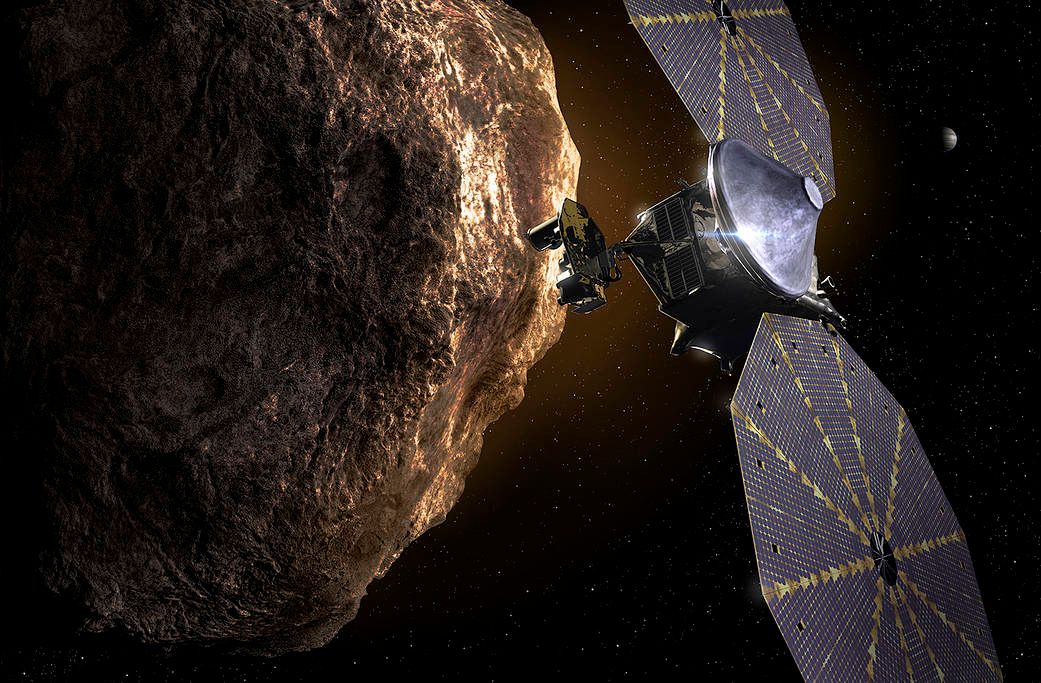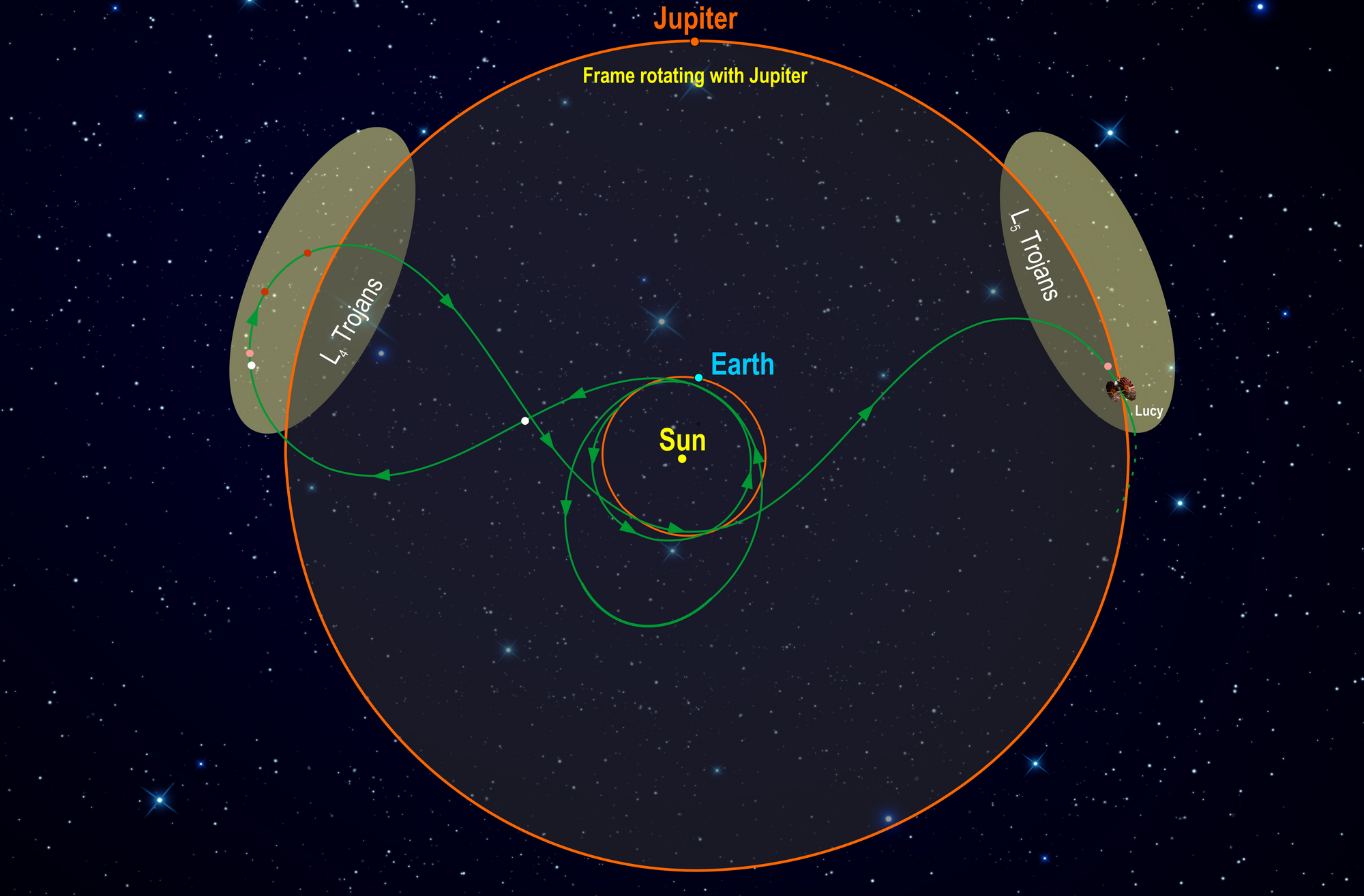
🛰 Capsule Lucy to investigate Trojan Asteroids
NASA's Lucy asteroid probe is set to begin its 12-year space mission in just a few weeks. The craft will set several records and grant us more knowledge on the creation of the solar system.
Share this story!
On October 16, NASA is going to launch Lucy, a probe with a mission that is noteworthy in many respects. The mission is planned to last twelve years, during which Lucy will visit eight different asteroids with different orbits, more than any craft in history, and travel further away from the sun than any previous solar-powered spacecraft has done before.
Lucy is named after the famous fossil remains of a human ancestor, which gave us an important insight into human evolution. The capsule is intended to give us a similar idea of the formation of our solar system and the origins of its planets. To do this, Lucy will be the first mission to study Trojan asteroids.

Trojan asteroids take us back four billion years
Trojan asteroids are of importance to NASA because they are believed to be remnants of the primordial material from the formation of our solar system, four billion years ago. They are associated with the planet Jupiter and travel in two clusters, one leading the gas giant and one trailing it.
Lucy will visit both clusters and give humanity its first close-up look at the three different types of bodies in the swarms, called C, P and D-types. P and D-type Trojans are dark-red and resemble those found in the Kuiper Belt that extends beyond the orbit of Neptune. The C-types are found mostly in the outer parts of the Main Belt of asteroids, between Mars and Jupiter. All Trojans are believed to have an abundance of dark carbon compounds.
The capsule will not perform long-term observations of these asteroids but instead fly past at a relatively constant velocity of 5-8km/s. Data will be collected using cameras and spectrometers and inform researchers of their composition, structure and activity.
By becoming a premium supporter, you help in the creation and sharing of fact-based optimistic news all over the world.


